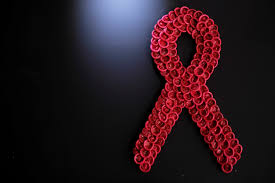Source: healio.com
An assessment of sexual risk behaviors, as they relate to viral suppression, from before, during and after incarceration among persons living with HIV and alcohol use or opioid use disorders demonstrated that the risk of HIV transmission among this population is low.
“After release to the community, criminal justice involved persons with HIV and co-occurring substance use disorders (SUDs ) reduce sexual risk behaviors (SRBs),” Sandra Springer, MD, associate professor of medicine and associate clinical professor of nursing at Yale School of Medicine and director of the Infectious Disease Outpatient Clinic at the VA Healthcare Services in Newington, Connecticut, told Infectious Disease News. “They also have improved viral suppression when treated with extended-release naltrexone and antiretroviral treatment.”
The results for this study were secondary outcomes from two previous randomized double-blind, placebo-controlled trials — funded by the NIH — which investigated “the impact of extended-release naltrexone (an FDA-approved medication for opioid and alcohol use disorders) among persons living with HIV and opioid and alcohol use disorders, respectively, who were incarcerated in prison or jail,” according to Springer.
The researchers noted that there are limited studies evaluating the SRBs and viral suppression as they relate to SRBs among persons with HIV upon release from the criminal justice system, despite a three times greater prevalence for HIV among those in the system compared with that of the general population.
Data collected 30 days before incarceration demonstrated that 60% of participants reported having sex. Comparatively, at 1 month after release, 41% reported having sex and, at 6 months after release, that percentage increased to 46%.
The researchers observed a decrease in the reported number of sex partners and sexual intercourse events from preincarceration to 1 month and 6 months after release. Although not statistically significant, use of condoms increased. At 1 month after release, 9.7% of individuals reported not using a condom during sex. The researchers reported that “only” two were not virally suppressed. At 6 months, 6.5% reported having sex without a condom, but all were virally suppressed.
“Among this group, we were unable to determine exactly why sexual risk behaviors decreased,” Springer said. “We posit that it may be due to several factors, including reductions in alcohol or drug use, relationships ended when participants entered the [criminal justice system (CJS)] and no new sexual partners were found post-release, or relationships continued after release and offered stability.”
According to the study, SRBs declined following release from jail or prison among persons living with HIV and alcohol use or opioid use disorders. Furthermore, viral suppression rates were high among those who did report SRBs.
“This study shows that when people are started and maintained on treatment for opioid and alcohol use disorders combined their medications for HIV, HIV viral suppression is improved and thus the risk of HIV transmission is reduced,” Springer said. “It also shows that there is a public health benefit to screening and initiating SUD treatment prior to release from the CJS, as well as linking people to HIV care after release.” – by Marley Ghizzone
Disclosures: Springer reports receiving grant support from the National Institute on Alcohol Abuse and Alcoholism and the National Institute on Drug Abuse, and donated medication from Alkermes Inc, which was donated to this National Institutes of Health-funded research. Springer also reports providing consultation to Alkermes Inc. regarding published literature of extended release naltrexone outcomes.
